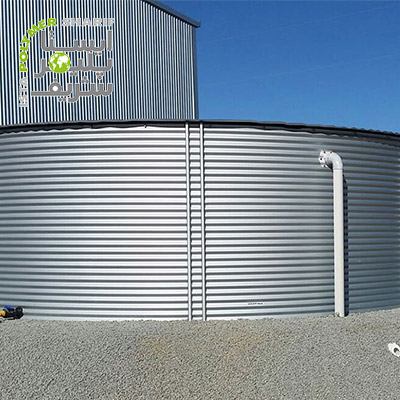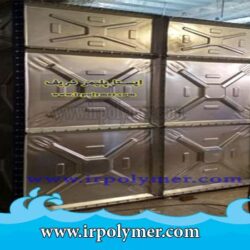Prefabricated metal tanks are produced in various capacities and transported to the installation site in sections on a pallet. Prefabricated tanks are similar to metal and galvanized tanks. In environments with difficult access, prefabricated tanks are a suitable option because they are assembled on-site. These tanks are named based on the wall material, either galvanized or metal, resulting in the terms galvanized prefabricated tanks or metal prefabricated tanks. Prefabricated tanks can be quickly erected in earthquake-affected cities and used for an extended period as essential drinking water tanks.
Applications of Prefabricated Metal Tanks
- Agricultural irrigation for greenhouses
- Drinking water storage
- Industrial water storage
- Use in rural and hard-to-reach areas
Components of Prefabricated Tanks
Prefabricated tanks have various components that are ultimately assembled on-site. These components include:
- Outer wall
- Roof of the prefabricated metal tank
- Middle layer
- Inner liner
- Sealing sheets
Layered System of Prefabricated Tanks
The outer wall must be resistant to rust.
The middle layer consists of sheets that protect the liquids inside. These layers are made of polymer fibers, providing high resistance to cold and heat.
Like a water tank for a garden, the inner liner must have high durability. The liner is resistant to sub-zero and high temperatures.
It should be resistant to chlorine gas. Liners should have anti-algae and antibacterial properties and a long lifespan. These sheets should be easy to repair and restore and resistant to water pressure. The roof of prefabricated tanks can be metal or polymer. To reduce costs and for economic efficiency, polymer roofs can be used.


